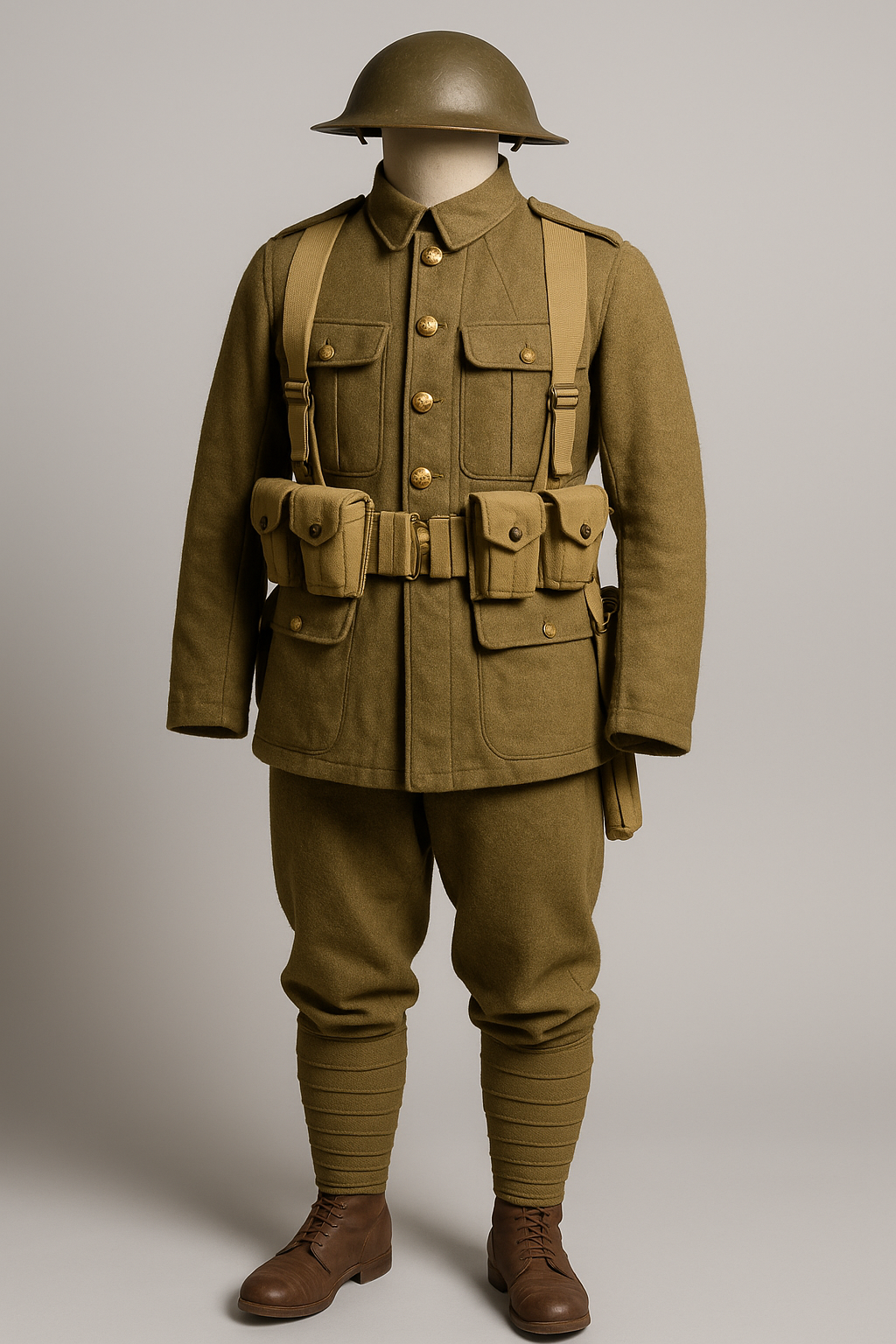
Was the US Uniform Like the British Uniform During WW1? A Deep Dive Into Soldier Gear & Colors
Published on Sep 22, 2025
Introduction
Did you know that more than 8.5 million soldiers wore military uniforms during WW1?
Each stitch told a story — especially when comparing nations. One question that often arises among enthusiasts is:
👉 Was the US uniform like the British uniform during WW1?
If you’re into history, military reenactments, or collecting WW1 and WW2 artifacts, understanding the details of these uniforms is essential. In this guide, we’ll explore the exact similarities and differences, covering:
- Colors (like what color are British uniforms in WW1)
- Materials used (e.g., what were British military uniforms made of in WW1)
- Design details and functionality
- Trends in collecting and reenacting gear today
Let’s dive into the fabric of history—literally.
Was the US Uniform Like the British Uniform During WW1? An Overview
Both British and American WW1 uniforms shared the same overall purpose: practical combat wear. But their designs, fabrics, and colors reflected national priorities and logistics.
Key Similarities
- Wool-based Materials: Both used wool, providing insulation and durability.
- Puttees: Long cloth wraps worn from ankle to knee.
- Helmet Use: Steel helmets were standard issue by mid-war (Brodie Helmet in the UK, M1917 Helmet in the US).
- Simple Cuts: Designed for mass production and ease of movement.
But Here's Where They Differ
FeatureBritish Uniform (WW1)US Uniform (WW1)
Color Khaki (muddy brown) Olive drab (greenish brown)
Material Type: Heavier wool; sometimes scratchy. Slightly lighter wool blend
Tunic Design 5-button front, stand-and-fall collar , 4-pocket service coat, open collar
Helmet Brodie Helmet (first issued in 1915) M1917 Helmet (British design copy)
Boots & Trousers Short boots with puttees, straight WW2 trousers , Marching shoes and spiral puttees
What Colour Was the British Uniform in WW1?
A lot of people ask: What color were British uniforms in WW1?
The official term was “Service Dress Khaki” — but this wasn't the tan khaki we often think of today. It had a green-brown hue, perfect for muddy European battlefields.
Quick Facts:
- Introduced in 1902, replacing the bright red coats.
- The dye mixture included yellow ochre and indigo.
- Designed for camouflage, not style.
Fun Fact: Under different lighting, the same uniform could appear olive, brown, or even greyish. That’s why it’s tricky for collectors to assess color from old photographs.
What Were British Military Uniforms Made of in WW1?
The British army focused on rugged practicality. Their WW1 uniforms were mainly made of:
- Wool Serge: Durable, tightly woven wool.
- Cotton Drill: For hot climates or underclothes.
- Brass & Leather: For buttons, belts, and pouches.
Benefits of Wool Serge:
- Kept soldiers warm in trenches.
- Naturally flame-resistant.
- Could withstand weeks without washing (a grim necessity).
However, the downside?
- It was itchy and caused rashes.
- Became heavy when wet—not ideal for trench warfare.
Comparing Gear: Was the US Uniform Like the British Uniform During WW1?
Let’s get tactical. Beyond the tunic and trousers, each army equipped its soldiers differently.
British Soldiers Carried:
- Webbing (P08 pattern) for gear
- Enfield SMLE rifles
- Mess tin, entrenching tools, gas mask
American Soldiers Carried:
- M1910 gear system
- Springfield M1903 or M1917 rifles
- Haversack, bayonet, shovel, gas mask
Big difference?
The US gear was based on its own standardized system, while Britain’s webbing was bulkier but better integrated for long hauls.
Modern Trends: Reenactment, Collecting & Replica Making
Whether you're building a collection or dressing for a living history event, here’s how to navigate today’s uniform trends.
Popular Reenactor Pieces:
- Original WW1 Brodie Helmets: Increasing in value.
- Replica WW1 Tunics: Often made from modern wool blends for comfort.
- WW2 Trousers: Sometimes used as stand-ins due to visual similarity.
Actionable Tips:
- ✅ Match the Color Tone: Use reference photos from museums or original swatches.
- ✅ Layer Smartly: Authenticity looks better with layers — undershirts, braces, etc.
- ✅ Mind the Boots: Many overlook footwear, but it completes the look.
Common Pitfalls:
- ❌ Using modern buttons or zippers.
- ❌ Mixing WW1 and WW2 items incorrectly.
- ❌ Choosing the wrong webbing for the year portrayed.
Collecting Original Pieces vs. Replicas
If you’re starting a collection or wardrobe, here’s a side-by-side comparison.
CriteriaOriginalsReplicas
Cost High (due to rarity) Lower upfront, more accessible
Condition : Often fragile, New, and wearable
Historical Value Authentic and collectible Great for events, not investment-grade
Pro Tip:
Start with a replica set, then slowly integrate original pieces like badges or helmets for authenticity.
Was the US Uniform Like the British Uniform During WW1? Final Thoughts
Short answer? Not quite — but close.
The two shared many features due to the nature of warfare at the time. However, differences in material, color, and equipment style reflect unique national approaches.
Recap:
- What colour was the British uniform in WW1? → Muddy green-brown “Service Dress Khaki”
- What were British military uniforms made of in WW1? → Mainly wool serge and cotton drill
- Were they similar to US uniforms? → Yes in function, but no in form and design
